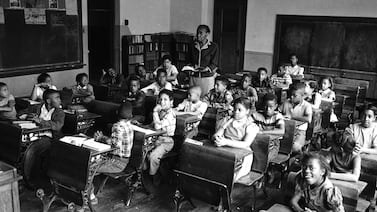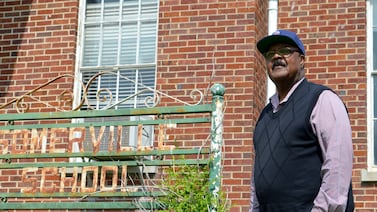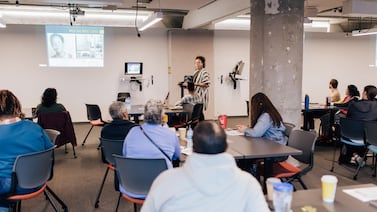As some states pass anti-LGBTQ legislation, New York state education officials have moved in the opposite direction, issuing new guidance on Monday on how schools should support transgender and gender-expansive students.
The 42-page document includes a slew of information for schools, including the correct terminology to use for gender identity, or how to support students who are coming out at school or want to transition. It has information on students’ privacy rights — including in relation to their parents — and research about LGBTQ students’ experiences at school. It also outlines the laws that prohibit discrimination against students on the basis of their gender.
Many of these laws were created after the state’s initial guidance from 2015, said Kathleen DeCataldo, assistant commissioner of the state education department’s Student Support Service office. One of those laws is the GENDA Act, which in 2019 added gender identity and expression as a protected category to New York’s Human Rights Law.
The document also includes more information and resources for schools than the 2015 guidance. For example, the guidance released Monday includes 26 words schools should know in relation to LGBTQ students, such as misgendering. The older document had just eight words.
The document opens with results from a 2021 national survey conducted by Gay Lesbian Straight Education Network, or GLSEN, which found that nearly 82% of the LGTBQ student respondents reported feeling unsafe at school. More than two-thirds of those students said they felt unsafe was because of their sexual orientation or gender identity.
Two-thirds of the respondents said they heard homophobic remarks at school, and roughly 40% said they “often or frequently” heard transphobic words, such as “tranny” or “he-she.”
As other states pass laws that seek to curb the rights of LGBTQ people, officials in New York “understand the climate right now,” DeCataldo told Chalkbeat.
“That makes it even more important to be clear about what the law requires of schools, so this is the perfect time to really have this update,” she said.
As one of the first states to release guidance nearly a decade ago, New York was ahead of the curve on pushing schools to create safer spaces for LGTBQ students. But members of New York’s Democratic committee recently signaled that the state is not doing enough. In May, the committee passed a resolution that called for elected officials and the governor to create a statewide LGTBQ curriculum for public schools. Efforts to do so in the past have failed.
New York City’s education department has a social studies curriculum supplement that centers the voices of LGTBQ people. On Monday, Mayor Eric Adams signed an executive order that, among other things, prohibits the city from cooperating with out-of-state investigations into gender-affirming care.
State officials developed the new guidance with the help of a roughly 30-person advisory committee that included representatives from advocacy groups such as the New York Civil Liberties Union, or NYCLU, and the Trevor Project, which focuses on preventing suicide among LGBTQ youth.
Allie Bohm, policy counsel for NYCLU and advisory committee member, praised the committee’s array of voices, including parents of transgender youth, lawyers who work in this subject area, school psychologists, and adults who had the experience of transitioning as children. She was especially glad that state officials asked transgender students themselves about their experiences to help shape the updated guidance.
The document quotes some of those students anonymously. For example, one student shared that it took about eight months to get a legal name change at school. “They will let you put in a nickname in the system,” the student said, “but teachers never really use it, especially in the beginning of the year.”
The state’s guidance cites a 2016 study that says LGBTQ students who felt discriminated against for their sexual orientation and gender expression got worse grades than students who reported fewer instances of harassment. Those students were also roughly three times as likely to miss school.
Bohm said her organization hears about different ways schools across the state have discriminated against transgender youth, such as people who were told they couldn’t use a bathroom that matches their gender identity. It’s less common to hear examples in New York City but not unheard of, she said.
“This is a document that really, clearly says from the state’s highest education agency, ‘We see you,’ to trans youth, and, ‘We support you,’” Bohm said. “To feel like your state has your back is incredibly powerful.”
Creating this guidance may also mean that students might not have to constantly explain themselves, said Kraig Pannell, director of the Office of LGBTQ Services for New York’s state health department and another advisory member.
“Regardless of how you identify or regardless of what your gender expression is, if you have to go in and explain and teach somebody something, that gets burdensome,” Pannell said.
Reema Amin is a reporter covering New York City public schools. Contact Reema at ramin@chalkbeat.org.








